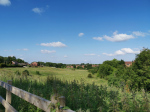Getting in, out and around Saddleworth – is there a better way?
Letter to Editor by Parish Councillor Rob Knotts
 Among the 2,363 stations and 5,000 miles of railway lines identified for closure in the UK by the Beeching reports published in the mid-1960s were the stations and track between Oldham and Delph; Greenfield station survived. The reports’ objectives were to stem the large losses incurred during a period of increased competitive road transport and to reduce rail subsidies needed to sustain the network. Economic recovery and the end of fuel rationing resulted in increasing competition as more people could afford cars and road haulage could compete for freight.
Among the 2,363 stations and 5,000 miles of railway lines identified for closure in the UK by the Beeching reports published in the mid-1960s were the stations and track between Oldham and Delph; Greenfield station survived. The reports’ objectives were to stem the large losses incurred during a period of increased competitive road transport and to reduce rail subsidies needed to sustain the network. Economic recovery and the end of fuel rationing resulted in increasing competition as more people could afford cars and road haulage could compete for freight.
In 1961 Saddleworth’s population totalled 16,760; the current population is about 25,500 with car ownership estimated at about 18,000. UK car ownership increased from 19 million in 1971 to about 31.7 million in 2016, a 67% increase. Applying the same increase to Saddleworth gives the estimated number of cars in Saddleworth in 1971 as just under 6,000.
Increased housing has led to increased population. Road vehicles add to traffic flows; for example, the officially measured Estimated Annual Average Daily Flow along the A62 in Scouthead totals about 9,000 vehicles. Traffic congestion is a problem – peak time journeys from Austerlands to Oldham Mumps can take up to an hour; convergence of the Ripponden, Shaw and Lees roads plus feed-ins from arterial roads onto the A62 are the main causes. Engine emissions and traffic noise affect the environment. One factor that has not increased is the number of parking spaces available; many vehicles are parked on main roads. When villages were developed cars were not on the scene. Residents now rely on cars for activities such as getting to work, shopping, surgery visits, so car ownership is high; about 1.5 per household.
The annual cost of traffic congestion in the UK is predicted to rise 63 Percent by 2030 to £21 billion. The cost is calculated against reduced productivity of the labour force due to sitting in traffic, related inflated transport costs that push up the prices of goods and the carbon-equivalent cost of the emissions.
Even if land was readily available for building additional roads the cost in doubtless prohibitive.
The impact of road traffic is also detrimental to public well-being and health. Estimated annual 29,000 deaths in UK are attributed to road transport air pollution while pollution is claimed to reduce the life expectancy of everyone in the UK by 6 months. Air pollution also damages biodiversity, reduces crop yields and contributes to greenhouse gases causing climate change.
Greenhouse gases include:
Carbon dioxide (CO2) which although not directly harmful to health contribute to climate change.
Nitrous oxide (N2O) has 300 times the global warming potential of CO2 and can persist in the atmosphere for 100 years. Each vehicle emits 50 mg per mile.
Methane (CH4) with a global warming potential of more than 20 times that of CO2 it can persist in the atmosphere for approximately 12 years.
Estimated Saddleworth car emissions per year are:
CO2: over 35,000 tonnes.
Nitrous oxide: over 7,000 tonnes.
Methane about 1.5 tonnes.
Challenges to dealing with Saddleworth’s traffic include encouraging people to use public transport and leave their cars at home, developing more industry and jobs in Saddleworth and finding another way of moving people around and in and out of Saddleworth
The issue of traffic in Saddleworth poses an important question: “Has the time come to seek a light rail transit system in Saddleworth?” Before the Beeching cuts there were two railway lines in Saddleworth: Oldham to Delph and the Micklehurst Loop linking Staley Bridge to Diggle and beyond. While the tracks were removed the land on which they ran still exists in the form of cycle trails and bridleways. Can the land be developed to accommodate a light rail transit system? Could a system be developed to carry passengers and freight? An important feature of the development of a light rail system is that it must not rob communities of the associated walking/cycling trails. An initial survey of the land suggests that there is sufficient space to accommodate both.
Issues that need to be considered are:
- Political will.
Land availability and suitability.
Type of transit system.
Power/energy supply.
Impact on environment and community.
Cost.
Funding.
Return on Investment.
Existing technology includes overhead lines which supply electricity to most light rail systems. This avoids the danger of passengers stepping on an electrified  third rail. Overhead lines are expensive to install and maintain and are susceptible to weather. The London Docklands Light Railway uses an inverted third rail for its electrical power which allows the electrified rail to be covered and the power drawn from the underside. Trams in Bordeaux, France use a special third-rail configuration where the power is only switched on beneath the trams, making it safe on city streets. Several European and North American systems use diesel-powered vehicles which generate greenhouse gases.
third rail. Overhead lines are expensive to install and maintain and are susceptible to weather. The London Docklands Light Railway uses an inverted third rail for its electrical power which allows the electrified rail to be covered and the power drawn from the underside. Trams in Bordeaux, France use a special third-rail configuration where the power is only switched on beneath the trams, making it safe on city streets. Several European and North American systems use diesel-powered vehicles which generate greenhouse gases.
China has unveiled a new tram which runs on ‘virtual tracks’ called Autonomous Rail Transit (ART). It uses white painted road markings, assisted by a driver on specially designated lanes.
Battery-powered and capable of speeds up to 43 miles per hour, a three-carriage vehicle can hold more than 300 passengers. CRRC, the Chinese transportation company that manufactures them, estimates that building and running a network of rail-buses would be about 20 percent of the cost of a subway system.
The main question that needs to be asked is: “Is it right to expect Saddleworth to accept increased traffic problems arising from housing developments that lack effective traffic infrastructure?” A light rail system offers a solution in tackling the problem.
Saddleworth News and Life welcomes your comments and thoughts.




Houses run alongside the bridle paths you mention in your proposal. This raises an immediate concern for residents because of the close proximity of the bridle paths and the noise, disruption and loss of privacy that would inevitably occur as a consequence of the proposals. This would also have a detrimental effect on house prices and an adverse affect on their potential for selling. Have you given any consideration the impact this would have on the quality of life your proposals would have on those residents?
I don’t think I’ve read such complete and utter rubbish in my life.
“peak time journeys from Austerlands to Oldham Mumps can take up to an hour”
I drive to Leigh every day from Uppermill in 1 whole hour for goodness sake ..
“Before the Beeching cuts there were two railway lines in Saddleworth: Oldham to Delph and the Micklehurst Loop linking Staley Bridge to Diggle and beyond. While the tracks were removed the land on which they ran still exists in the form of cycle trails and bridleways. Can the land be developed to accommodate a light rail transit system? Could a system be developed to carry passengers and freight? An important feature of the development of a light rail system is that it must not rob communities of the associated walking/cycling trails. An initial survey of the land suggests that there is sufficient space to accommodate both.”
I cannot begin to explain how pathetically incorrect the above is.
First of all its the strangest spelling of Stalybridge I’ve ever seen. Second of all – WHO ON EARTH carried out this survey? How on earth could a horse rider go for a ride along the bridleway through Uppermill whilst squeezing by the side of a huge tram and electric overhead wires? And where on earth would this tram go once it reaches what used to be the Butterhouse Tunnel?!